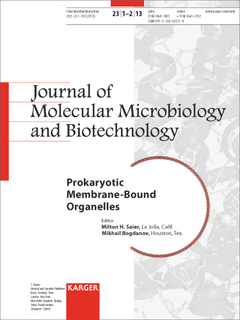Description
Prokaryotic Membrane-Bound Organelles
Special Topic Issue: Journal of Molecular Microbiology and Biotechnology 2013, Vol. 23, No. 1-2
Language: English
Subjects for Prokaryotic Membrane-Bound Organelles:
Publication date: 04-2013
192 p. · Paperback
192 p. · Paperback
Description
/li>
The traditional view of biology divides living organisms into two major groups, the eukaryotes and the prokaryotes, the former having membrane-bound organelles, the latter lacking them. However, recent research has revealed that this view is blatantly in error. A surprising diversity of organelles occurs in bacteria. Even the prokaryotic workhorse, Escherichia coli, can produce intracellular membrane structures and bleb off extracellular vesicles. Photosynthetic bacteria have chromatophores which house the photosynthetic apparatus of the cell, while magnetotactic bacteria have magnetosomes that contain strings of membrane-enclosed iron crystals for sensing the Earth‘s magnetic field. Planctomycetes species may contain double membrane-surrounded nuclei as well as organelles called ammoxosomes for the oxidation of ammonia. Acidocalcisomes, once thought to be unique to eukaryotes, have also been identified in bacteria. Extracellular bacterial vesicles serve functions including communication and protection. The articles presented in this JMMB written symposium bring the reader up to date on research concerning these structures and functions.
© 2024 LAVOISIER S.A.S.




